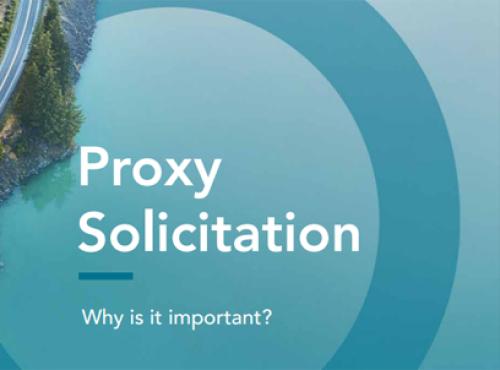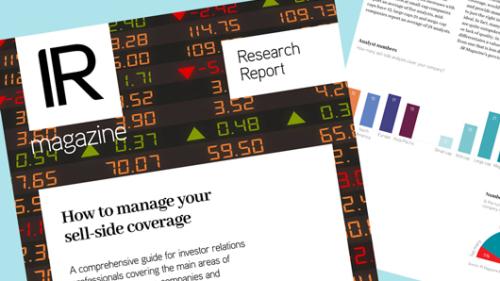What the proliferation of independents means for investor relations officers
As an industry, sell-side equity research has evolved dramatically during the past decade. The era of bulge-bracket equity research, characterized by armies of research analysts covering a multitude of industries, has given way to the rise of the era of the independent equity research boutique, where low head count, sector specialization and differentiated research products have come into vogue.
The evolution of the independent equity research boutique owes much of its success to the Global Research Analyst Settlement of 2003. This settlement enacted a myriad of reforms that, among other directives, forced the formal separation of the investment banking and equity research portions of brokerage operations, while setting aside substantial amounts of money to help encourage reinvestment in independent, objective and transparent investment research.
Altered reality
The era of the independent research boutique served to usher in several new market realities for players on both the buy side and the sell side.
First, boutique research became increasingly specialized, focusing on just a handful of industries where analyst teams possessed deep knowledge, relationships and expertise. Second, equity research became increasingly focused on its ability to drive trading volumes through actionable trading calls. Third, given that many of those analysts joining – or founding – boutiques enjoyed long-standing professional relationships with the management teams at companies they covered, corporate access became a key component of the overall service provided by the sell side.
Fourth, boutiques operated with minimalist cost structure, leading some shops to reduce their institutional sales teams in favor of a model where the analyst was his or her own salesperson, associate and assistant. Finally, smaller boutiques came to focus on a handful of very select buy-side client accounts that allowed the boutiques to tailor the emphasis of their research to the issues that truly mattered to paying clients.
The future of sell-side research
Sell-side equity research will become an increasingly fragmented industry. A flood of entrepreneurs have started their own firms to fill perceived demand in the market for outsourced institutional research and related services, with a focus on under-followed and emerging growth sectors. While the severity of the current recession has led some of these newly minted firms to fold or merge, many of the newly launched boutiques have survived the downturn, picking up talent from larger brokerage houses in the process. Many of these research boutiques are not located solely in large market centers, opting instead to headquarter themselves in second and third-tier markets, where overheads are lower.
Research will become more proprietary, leading to limited access. As the economics of equity research changes, research will cease to be disseminated as it has been in the past. Over the previous decade, we have seen equity research teams greatly curtail who receives their research in an attempt to elevate the perceived value of their product. Scant few research houses are distributing their research beyond a tightly maintained email distribution list or a password-protected, client-only, web-based research data center. As a result, frequent analyst relations have become that much more important as IR professionals seek to stay abreast of analyst actions, because they may arise on a real-time basis.
While the sell side will likely exist in some shape or form for years to come, the buy side will continue to allocate more resources to internal idea generation. The most proprietary kind of research is the research no one else has. For most institutional funds, this means buying the talent that writes the research, as opposed to the research the talent sells to the Street. This may lead the buy side to reallocate research dollars toward the acquisition of research talent in lieu of outsourced research.
Adapting to the new landscape
For those in the investor relations profession, the emergence of the independent research boutique has been a mixed blessing. On the one hand, the dispersion of research talent from bulge-bracket firms to a wide range of smaller research houses has afforded once under-covered companies and industries the opportunity to garner more attention from a wide range of sell-side research outlets.
On the other hand, the quality, depth and scope of the research published from one boutique to the next has, at times, varied enormously, depending on the expertise of the analyst team in question. This has led some to question the potentially adverse impact of lesser research products.
Although conventional wisdom among some IR professionals has traditionally implied that all analyst coverage is worth pursuing – something akin to the notion that all PR is good PR – one could make a compelling case that this idea is seriously flawed.
Although an IRO is obliged to help educate and communicate with any analyst who chooses to initiate coverage, that doesn’t necessarily mean IR professionals should adopt a ‘come one, come all’ approach to analyst targeting. Quite the contrary. Just as an analyst initiating coverage performs research on a company to test its merits as a worthwhile investment, so must IROs perform the appropriate level of diligence on analyst partners prior to engaging with them.
Enough is enough?
Of course, when judging the relative merits of analyst coverage as a tool to enhance one’s investor relations program, the question must be asked: how much coverage is enough coverage?
In a recent study conducted for the purposes of this article, the average and median analyst coverage by market capitalization was calculated. This analysis was intended to help issuers benchmark analyst coverage, contingent on their respective market cap, but irrespective of sector association.
Th research showed that the most significant variance in analyst coverage is evident in the transition from mid-cap to large-cap issuers. The analysis shows a wide range of analyst coverage within the large-cap category, with some large-cap issuers reporting fewer than five analysts under coverage, while others had more than 50 analysts under coverage.
Coverage specifics
Certainly, when it comes to big multinational issuers with large public floats (and millions of shares traded daily), the chance to capture a piece of the trading volume pie is an attractive inducement for many analyst teams.
The corresponding difficulty for analysts, however, lies in trying to differentiate their research from the wide range that is now available. The proliferation of independent equity research boutiques has resulted in an increase in the resources being allocated to analyzing ‘under-covered’ and/or emerging growth sectors where their research teams can develop niche market franchises.
When coverage at a broad sampling of independent research boutiques was analyzed, it was found that, on average, the typical boutique covers approximately five sectors. This compares with the typical bulge-bracket company that covers 10 or more macro sectors.
More independent analysis conducted for this article reveals the boutique firms’ top five most-covered sectors – by order of highest sector concentration – are the technology, energy, consumer, healthcare and industrial sectors. Several respected independent boutiques specialize exclusively in one or two sectors, but analyze these sectors with extreme vigor. For example, Keefe Bruyette & Woods and Sandler O’Neil cover strictly financial services companies, while Leerink Swann specializes exclusively in healthcare companies.
Overall, this level of specialization has become highly attractive for many buy-side accounts that value the in-depth knowledge, veteran perspectives and industry contacts.










